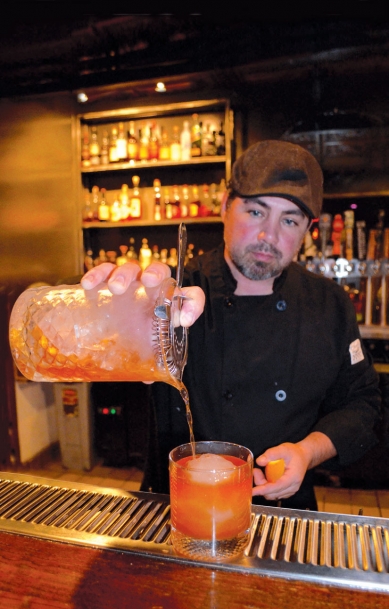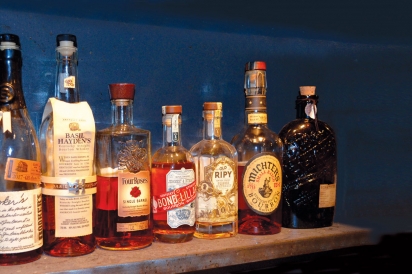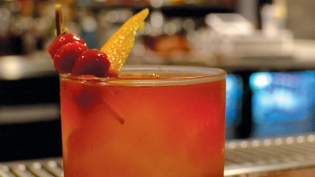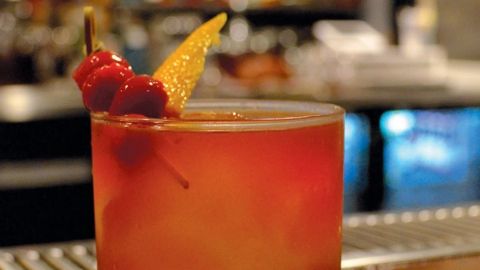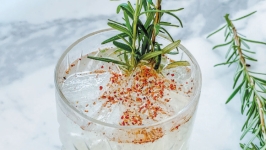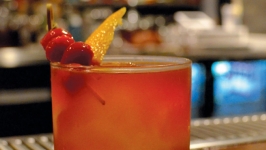A Primer on Whisky
All drams, no drama
I once had a boss from Aberdeen, Scotland, whose dialect of English, in which the vowels pitched and rolled like a ship on a stormy sea, left me struggling to decipher exactly what he wanted me to do. Whisky, one of Scotland’s most famous exports, often leaves people similarly dazed and confused. For starters, there’s the spelling: whisky or whiskey? Then there are the variations on a theme, from scotch to bourbon to rye.
With winter upon us and the nights drawing in, now’s the perfect time to curl up with a wee dram—the Scottish term for a measure of whisky—and read on as we sort our malts from our mashes.
HOW TO SPELL IT
Whisky or whiskey? The spelling generally depends on the country that’s making it. A cheat sheet is that countries with an “e” in their name, like Ireland and the United States, favor including the “e.” Countries without an “e”—Scotland, Japan and Canada—spell it whisky, whiskies for plural. (In this article, I use whisky to refer to the general category of drink and place-specific spellings when writing about such variations.)
SCOTCH, BOURBON AND RYE, OH MY
Finding a single organizing principle for the world of whisky is hard. Although always made from grain, the raw materials vary, as does the place of origin, the process, even the type of glass—snifters, tulips and tumblers to name a few—from which it’s drunk. Understanding whisky is the terrain of flowcharts and Venn diagrams, but let’s start where we began: in Scotland.
Scotch whisky is, as the name implies, from Scotland. Therefore, all Scotch is whisky, but not all whisky is Scotch. Like wine, there are well-known regions for Scotch whisky, including Lowlands, Highlands/Islands, Speyside, Islay and Campbeltown.
Daniel Kelly, whisky aficionado and managing partner at The Amendment in Camarillo, is a fan of single-malts from the Highlands, which he describes as “just a hint of smoke with a kiss of sea salt from the raging oceans that far north.”
Place-related distinctions aside, many of the variations in Scotch whisky are also relevant to the whiskeys we know in the U.S. Both Scotch whisky and U.S. whiskey encompass malt whiskies, the common denominator of which is malted barley. In Scotland, a malt whisky is required to be made from all malted barley, while in the U.S. only a majority of the grain is required for the designation. Single-malt Scotch whiskies come from a single distillery. As with wine, the term blended operates on two different vectors when it comes to whisky, meaning a blend of grains or distilleries.
Like Scotch, U.S. whiskey has some variants that are place-specific. Bourbon can only be produced in the U.S., and Tennessee whiskey only in Tennessee. Both are made from at least 51% corn, and Tennessee whiskey is filtered through maple charcoal. Rye whiskey, made from at least 51% rye, is another popular type of U.S. whiskey, although not exclusively made here. Many U.S. ryes hail from Indiana; Canada also excels in this category.
FINISHING TOUCHES
The distinctions covered so far have largely highlighted ingredients, known as the bill of mash, but every successive part of the process—fermentation, distillation, maturation and bottling—affects the product. The last two, maturation and bottling, include the aging and finishing processes that provide many of the characteristics used to market whisky.
Most whisky is aged in wood, usually oak. Scotch whiskies must mature for at least three years, and a bonded U.S. whiskey must have aged for at least four. Age, however, is not an absolute indicator of quality.
As with wine, there are young, highly drinkable whiskies, many being made by craft distillers like Sespe Creek Distillery in Oxnard, which produces between two and five barrels of their Warbringer Southwest Bourbon each month.
Asked about trends in U.S. whiskeys, Sespe Creek Distillery founder and distiller David Brandt points to “unique barreling strategies that produce more interesting flavors.” This often translates to finishing whiskies in casks or barrels previously used for another alcohol, like wine or rum. His Warbringer Southwest Bourbon is finished in sherry casks, which “add more sweetness, color and a hint of cherry.”
Kelly, of The Amendment, a whisky-led bar adjacent to Basil & Mint Vietnamese Cafe in Camarillo, uses wine-barrel finishes to gently introduce his customers to the spiciness of rye, a category he says is “on fire.” WhistlePig Old World Cask Finish, a 12-year-old rye whiskey finished in port, Sauternes, and Madeira casks, is one of his favorites.
At Ventura-based Channel Islands Distillery, co-owner Joe Freas relies on deep-charred oak barrels to give its Main Street Whiskey, made from a corn, grain and rye bill, its smoky flavor. Freas also credits their bottling process, designed to retain lipids from fermentation, for the whiskey’s taste and smoothness.
Whether here in Ventura County or at the countless craft distilleries popping up around the world, Kelly is a fan of this current wave of experimentation, noting that “while it’s important to remember the classics, it’s also great fun to experience the new and creative expressions.”
As with other parts of the wine, beer and spirits world, the tension between upstarts and upholders is good for business and for consumers. American demand for whisky continues to grow. This winter, join the trend with a dram served neat, over a giant ice cube or in a classic Old Fashioned.
BURNS NIGHT
Looking for an excuse to throw a whisky-themed dinner party? Burns Night, celebrating Scottish poet Robert Burns, is January 25. The traditional menu includes cockaleekie (chicken and leek) soup, neeps and tatties (parsnips and potatoes) and a haggis (an offal “pudding”) doused in whisky sauce. The recipe for the “sauce” is simple: open a bottle of whisky and pour. Just make sure you leave enough for guests to have a wee dram to wash down the haggis.


